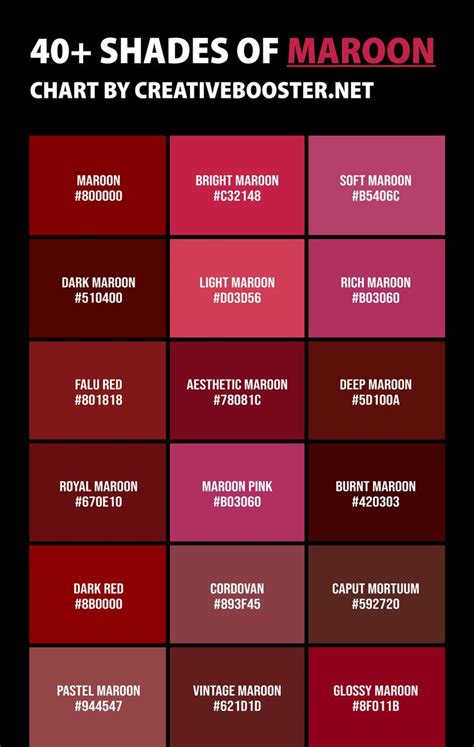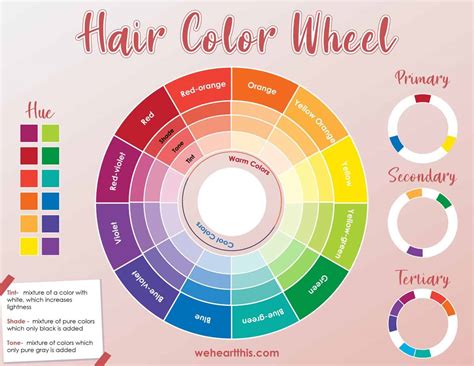Introduction
The hair color wheel is an invaluable tool for hairdressers and clients alike. It provides a systematic approach to understanding the relationships between different hair colors and allows for precise color selection and customization. By understanding the color wheel, you can confidently navigate the world of hair color and achieve the perfect hue for your desired look.

Understanding the Color Wheel
The hair color wheel is a circular diagram divided into 12 sections, each representing a different color. These colors are organized based on their relationships to each other:
- Primary Colors: Red, yellow, and blue. These colors cannot be created by mixing other colors.
- Secondary Colors: Orange, green, and purple. These colors are created by mixing two primary colors.
- Tertiary Colors: Red-orange, yellow-green, blue-green, blue-violet, red-violet, and yellow-orange. These colors are created by mixing a primary color with a secondary color.
Color Theory for Hair
The hair color wheel can be used to determine which colors will complement or contrast each other when applied to hair.
- Complementary Colors: These colors are opposite each other on the color wheel and create a high-contrast effect when placed next to each other. For example, red and green are complementary colors.
- Analogous Colors: These colors are adjacent to each other on the color wheel and create a harmonious effect when blended together. For example, blue, blue-green, and green are analogous colors.
- Split Complementary Colors: These colors are opposite each other on the color wheel, but with one intervening color. For example, red, blue-violet, and yellow are split complementary colors.
- Triadic Colors: These colors are equidistant from each other on the color wheel. For example, red, yellow, and blue are triadic colors.
Choosing the Right Hair Color
When choosing a hair color, it is important to consider your natural hair color, skin tone, and eye color.
- Natural Hair Color: The color of your natural hair will determine the starting point for any color change. For example, if you have dark hair, you will need to use a stronger bleach to achieve a lighter color.
- Skin Tone: Your skin tone will influence the shade of hair color that will complement you best. Warmer skin tones look better with warm hair colors, while cooler skin tones look better with cool hair colors.
- Eye Color: Your eye color can also be a guide when choosing a hair color. For example, blue eyes tend to look best with cool hair colors, while brown eyes look best with warm hair colors.
Techniques for Applying Hair Color
There are a variety of techniques that can be used to apply hair color, including:
- Permanent Color: This type of hair color is mixed with ammonia and hydrogen peroxide to penetrate the hair shaft and permanently alter the color.
- Semi-Permanent Color: This type of hair color does not contain ammonia and hydrogen peroxide and fades gradually over time.
- Temporary Color: This type of hair color is applied to the surface of the hair and washes out after a few shampoos.
- Bleach: Bleach is a chemical agent that removes the natural pigment from the hair, allowing you to achieve lighter color results.
Pain Points and Motivations
Pain Points
- Unwanted hair color: Clients may experience dissatisfaction with their hair color due to poor application, incorrect color selection, or damage caused by harsh chemical treatments.
- Difficulty in achieving desired hair color: Obstacles such as natural hair color, uneven bleach results, and color stubbornness can hinder the achievement of the desired hair hue.
Motivations
- Self-expression: Hair color can serve as a creative outlet for individuals to express their individuality and style.
- Improved aesthetics: An expertly chosen and applied hair color can enhance facial features, flatter skin tones, and boost overall appearance.
- Professional image: For certain industries and job roles, a professional hair color can contribute to a polished and appropriate work demeanor.
Benefits of Using the Hair Color Wheel
- Predictable results: The color wheel provides a reliable framework for predicting how different colors will interact when mixed or applied to hair.
- Customization: The wide range of hues available on the color wheel allows for endless possibilities in creating customized hair colors to suit individual preferences.
- Damage prevention: By understanding the relationships between colors, hairdressers can mitigate damage by selecting compatible shades and avoiding harsh chemical processes.
- Enhanced communication: The color wheel facilitates clear and effective communication between hairdressers and clients, ensuring both parties have a shared understanding of the desired color outcome.
Tips and Tricks for Using the Hair Color Wheel
- Consult a professional: For complex or drastic color changes, it is advisable to seek the expertise of a professional hair colorist to ensure optimal results.
- Test the color: Before applying a full head of color, perform a strand test on an inconspicuous area to assess the compatibility and desired outcome.
- Use complementary or analogous colors: When selecting highlight or lowlight colors, consider using complementary or analogous colors to create contrast or harmony, respectively.
- Avoid over-processing: Excessive bleaching or coloring can compromise hair health and lead to breakage. Allow ample time between chemical treatments to minimize damage.
Creative Applications of the Color Wheel
Beyond traditional hair coloring, the color wheel can inspire innovative applications in various industries:
- Fashion: Designers utilize the color wheel to create harmonious color palettes for clothing and accessories, evoking desired moods or highlighting specific features.
- Interior design: Architects and interior designers leverage the color wheel to design aesthetically pleasing and functional spaces that interact with light and evoke emotions.
- Graphic design: Digital artists and designers employ the color wheel to select complementary and contrasting colors for logos, website designs, and printed materials, enhancing visual impact and legibility.
- Cosmetics: Makeup artists use the color wheel to determine flattering eyeshadows, blushes, and lip colors based on individual skin tones and eye colors, achieving balanced and cohesive makeup looks.
Conclusion
The hair color wheel is an indispensable tool for anyone interested in understanding and achieving the perfect hair hue. By understanding the relationships between colors and applying the principles of color theory, you can navigate the world of hair color with confidence and create a look that perfectly represents your desired style and personality.
Tables
Table 1: Primary, Secondary, and Tertiary Colors
| Type | Colors |
|---|---|
| Primary | Red, Yellow, Blue |
| Secondary | Orange, Green, Purple |
| Tertiary | Red-Orange, Yellow-Green, Blue-Green, Blue-Violet, Red-Violet, Yellow-Orange |
Table 2: Complementary, Analogous, Split Complementary, and Triadic Color Schemes
| Scheme | Description | Example |
|---|---|---|
| Complementary | Colors opposite each other on the color wheel | Red and Green |
| Analogous | Colors adjacent to each other on the color wheel | Blue, Blue-Green, Green |
| Split Complementary | Colors opposite each other on the color wheel, with one intervening color | Red, Blue-Violet, Yellow |
| Triadic | Colors equidistant from each other on the color wheel | Red, Yellow, Blue |
Table 3: Hair Color Techniques
| Technique | Description |
|---|---|
| Permanent Color | Ammonia- and hydrogen peroxide-based color that penetrates the hair shaft |
| Semi-Permanent Color | Ammonia- and hydrogen peroxide-free color that fades gradually |
| Temporary Color | Color applied to the surface of the hair that washes out after a few shampoos |
| Bleach | Chemical agent that removes natural hair pigment |
Table 4: Benefits of Using the Hair Color Wheel
| Benefit | Description |
|---|---|
| Predictable results | Provides a framework for predicting color interactions |
| Customization | Allows for endless possibilities in creating custom hair colors |
| Damage prevention | Mitigates damage by selecting compatible shades |
| Enhanced communication | Facilitates clear and effective communication between hairdressers and clients |
